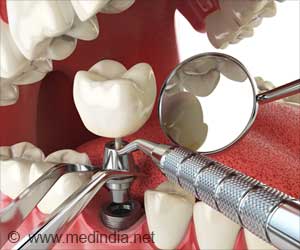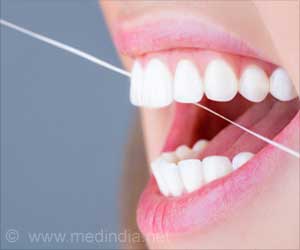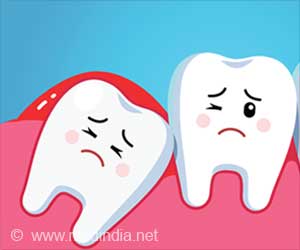In a first-ever clinical trial conducted to evaluate the safety of using the amalgam fillings that contain mercury, it has been found that it doesn't pose any health risk in children
In a first-ever clinical trial conducted to evaluate the safety of using the amalgam fillings that contain mercury, it has been found that it doesn't pose any health risk in children , bringing much respite not only for parents but also to dentists as well, according to foodconsumer.org. The studies were conducted independently, one in Europe and other in the US, and have come to the same conclusion about the health risks of dental amalgam in children.
Both the findings said that children whose cavities were filled with dental amalgam had no adverse health effects. The findings included no detectable loss of intelligence, memory, coordination, concentration, nerve conduction, or kidney function during the 5-7 years the children were followed. The researchers looked for measurable signs of damage to the brain and kidneys because previous studies with adults indicated these organs might be especially sensitive to mercury.The authors noted that children in both studies who received amalgam, informally known as "silver fillings," had slightly elevated levels of mercury in their urine. But after several years of analysis, they determined the mercury levels remained low and did not correlate with any symptoms of mercury poisoning.
"What's particularly impressive is the strength of the evidence," said NIDCR director Dr. Lawrence Tabak. "The studies evaluated mercury exposure in two large, geographically distinct groups of children and reached similar conclusions about the safety of amalgam."
Dentists have used silver-colored amalgam to fill cavities for more than 150 years. The material is made from an alloy powder of silver, copper, zinc, and other metals held together like glue by mercury. The mercury comprises about half the total weight of a filling.
The discovery raised concerns about the possible toxicity of chronic low-level exposure to mercury from dental amalgam. The toxicity of mercury at higher levels, such as from industrial exposures, is well established. Possible symptoms of mercury poisoning include irritability, memory loss, tremors, poor physical coordination, insomnia, kidney failure and anorexia.
To help fill gaps in knowledge about the potential risks of dental amalgam, the NIDCR began supporting in 1996 the first two safety trials of amalgam in children. The decision to support the trials stemmed in part from the fact that millions of children receive amalgam fillings each year. But nearly all of the available safety data on mercury exposure involved adults, typically those who worked in environments where the element is present in relatively large doses, such as dental offices.
Advertisement
The two studies, whose results are reported this week in JAMA, are: the New England study, which was undertaken in the urban Boston, Mass. area and rural Farmington, Maine, and the Portuguese study, conducted in Lisbon, Portugal. Each study enrolled over 500 children who had existing untreated decay in permanent posterior, or back, teeth but no previously placed dental amalgam fillings. Each child was randomly assigned to receive either amalgam or composite resin (tooth colored) fillings while participating in the research studies.
Advertisement
All the children were subjected to annual standardized tests of memory, attention, physical coordination, and velocity of nerve conduction. Neither did the scientists detect a pattern of decline in the test scores of individual children who received amalgam fillings.
DeRouen noted that children who received amalgam fillings had slightly elevated levels of mercury in their urine, measuring on average 1.5 micrograms per liter of urine for the first two years and leveling off to 1.0 micrograms per liter or less thereafter. However, these numbers fall within the so-called "background" level (0-4 micrograms per liter) that is typical for an average person not exposed to industrial or other known sources of mercury. A microgram equals one millionth of a gram.
The scientists noted that children in both groups were in great need of dental care. Among those in the amalgam group, children had on average 10.1 tooth surfaces treated upon entry into the study. By year seven of the study, they had received on average a total of 18.7 surface restorations. Each tooth has either four or five defined surface areas, totaling 128 surfaces in our 32 permanent teeth.
In the New England study, which enrolled children ages six through 10, the scientists also found after five years no significant differences in the well being of the 267 participants who randomly received amalgam and their 267 counterparts who received composite fillings. "We took great pains to design our study in a way that our tests would be sensitive enough to detect as little as a three-point drop in IQ," said Dr. Sonja McKinlay, the principal investigator of the American study and a scientist at New England Research Institutes in Watertown, Mass. "What we found over the course of the study is the amalgam fillings had no adverse effects on the IQ of these children as well as on a range of other neuropsychological measures and kidney function."
The New England scientists also found that children with amalgam fillings had very slightly increased mercury in their urine. On average, these children had mercury levels of 1.0 micrograms per liter of urine compared to an average measure of 0.5 in those who received composite fillings. Both averages remained within the range of background exposure and were not related to IQ, other tests of brain function, or kidney function.
The New England study participants also had fairly extensive tooth decay, with 9.5 decayed tooth surfaces at the start of the study, of which 1.7 were in permanent teeth. By the end of the study, the children had on average 15 tooth surfaces restored. In the United States, children between the age of 6 and 10 have on average only 1.6 decayed surfaces among both their primary and permanent teeth.
"Given the rigorous nature of the study designs and that both clinical trials confirmed the other's results, I think these findings should be reassuring for parents, children, and dental professionals," said McKinlay.








